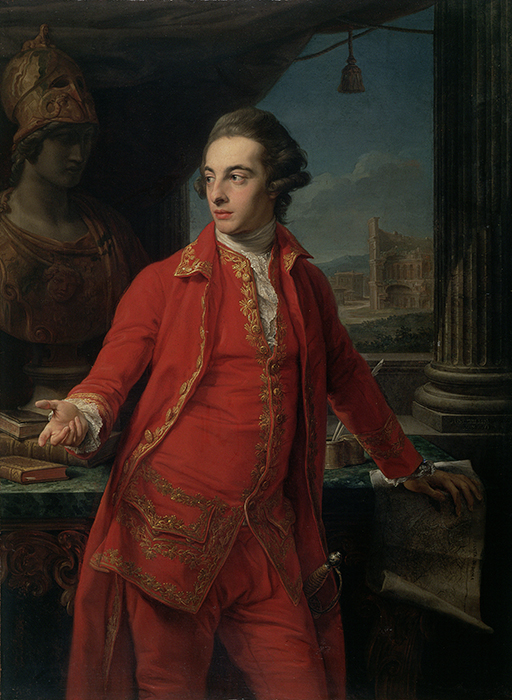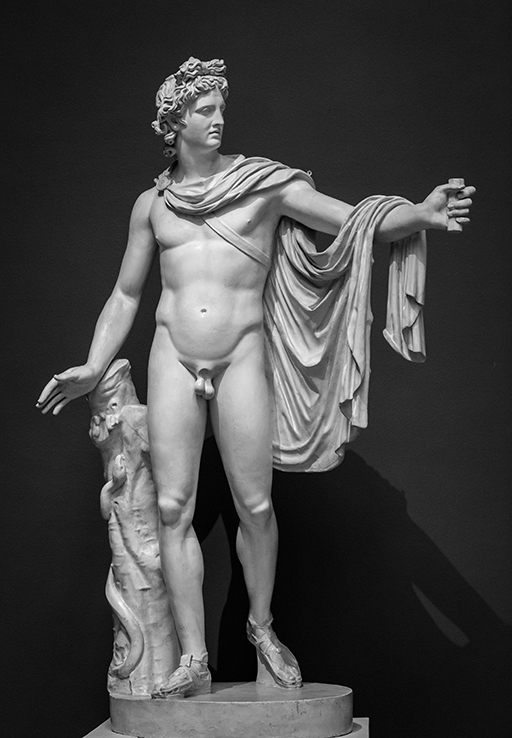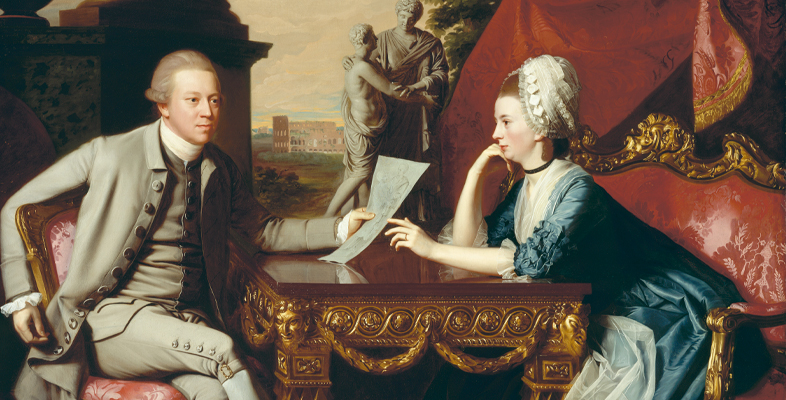2.2 The Grand Tour portrait: places and objects

What other questions might we have about Batoni’s portrait (Figure 5)? Perhaps you wondered what it depicts and who the figure represents. We know that the sitter is Sir Gregory Page-Turner (1748–1805). He was the heir to his great uncle’s estates, the income from which was around £24,000 a year (a considerable sum in the eighteenth century), so he could afford not only Pompeo Batoni’s fee, but to undertake the Grand Tour in the first place.
The whole point of a Grand Tour portrait was to ensure that viewers back at home would be able to recognise the sitter’s familiarity with the classical monuments they had visited on the tour. They were in effect proof of their physical presence in places such as Rome and Pompeii. Portraitists like Batoni therefore incorporated references to these places. You might have had some ideas about the setting in Figure 5 already from the distant ruins in the background; in fact, this depicts the Colosseum. Batoni has clearly picked out the tiers and the curved form of the building. This portrait is, then, set in Rome, and the sense of place is reinforced by the (worn) map of the city the figure holds, implying that he is already familiar with its sites and monuments because he has spent time visiting them. Even his gesture seems to invite the viewer to join him on a tour of these places.
Other objects in the painting refer to the importance of a classical education to elite members of society such as Page-Turner: the bust (or head and shoulders sculpture) is of the Roman goddess Minerva, while the marble tabletop is scattered with books and an inkwell, implying that he is (literally!) turning pages by reading and writing about the places he has seen. Minerva represents poetry and wisdom, so the portrait could be implying that Page-Turner was seeking to take on the qualities represented by this female goddess. However, portraits are sometimes not what they seem, since the bust of Minerva was, in fact, a studio prop used by Batoni in other Grand Tour portraits of English sitters, enhancing the loosely classical associations of the portrait.

The portrait also nods to ancient sculpture in another way. The sitter’s pose is loosely based on a marble sculpture called the Apollo Belvedere (Figure 6), which shows the god Apollo as if he has just released an arrow from a bow. This connection between portrait and sculpture is a visual reference only viewers with knowledge of this sculpture – including presumably Page-Turner himself – would have appreciated.
